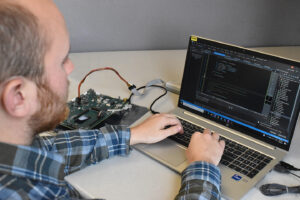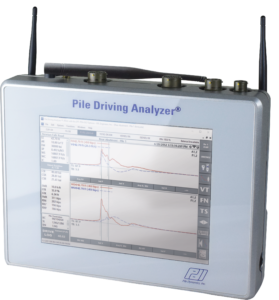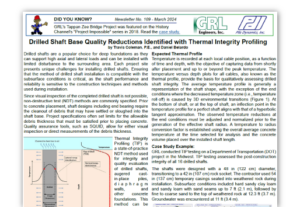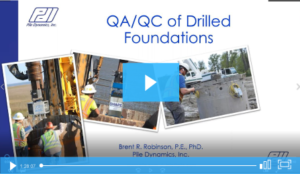Can the Pile Integrity Tester (PIT) be used to evaluate the length and defects of piles that support existing structures?
Yes, under favorable conditions, the PIT can test piles under existing structures. For the test to succeed, the pile itself must have a relatively solid concrete structure to channel the impact. Such structures could include a solid section concrete pile or a concrete filled steel pipe.
A pile made out of concrete with a comparatively light structure becomes almost inconsequential; provided there is access to the concrete at the top of the pile or shaft (example: a cell tower with legs significantly smaller than the shaft). As a result, the PIT test may be performed as usual.
A relatively massive structure will have a cap with a shorter vertical dimension. This is better for the test. One accelerometer placed concentrically above the pile may yield good results. Better results, however, will result from a Two Velocity Test.
The Two Velocity Test involves placing two different accelerometers along the shaft with an approximate 0.90 m (3 ft) vertical distance between. Preferably, the engineer will apply the hammer blows approximately 0.30 m (1 ft) above the top accelerometer. This method relies on the phase shift between the two signals to determine whether the details in the signal are traveling up the shaft (from defect reflections or the pile bottom) or down from the top after a reflection from the pile cap. This method requires that a sufficient portion of the shaft be accessible because of the recommended vertical distance between accelerometers. Additional requirements include the Pile Integrity Tester with 2 channels of data acquisition (PIT-FV) and the PIT-W Professional Software.
Regardless if the Two Velocity Method is used, the PIT-S software is useful for pile modeling. The model helps the analyst identify the expected signals (with accelerometer and impact locations below the pile top). Click here to download a free demo version of PIT-S!
The PIT is less suited for testing H-piles, steel sheet pile walls, or open end steel pipes. Alternatively, PDI suggests using the Length Inductive Test Equipment (LITE). The LITE involves lowering a probe into a borehole parallel to the pile. For the LITE probe to detect the presence of metal, the borehole should be lined with PVC tube.
Return to FAQs



